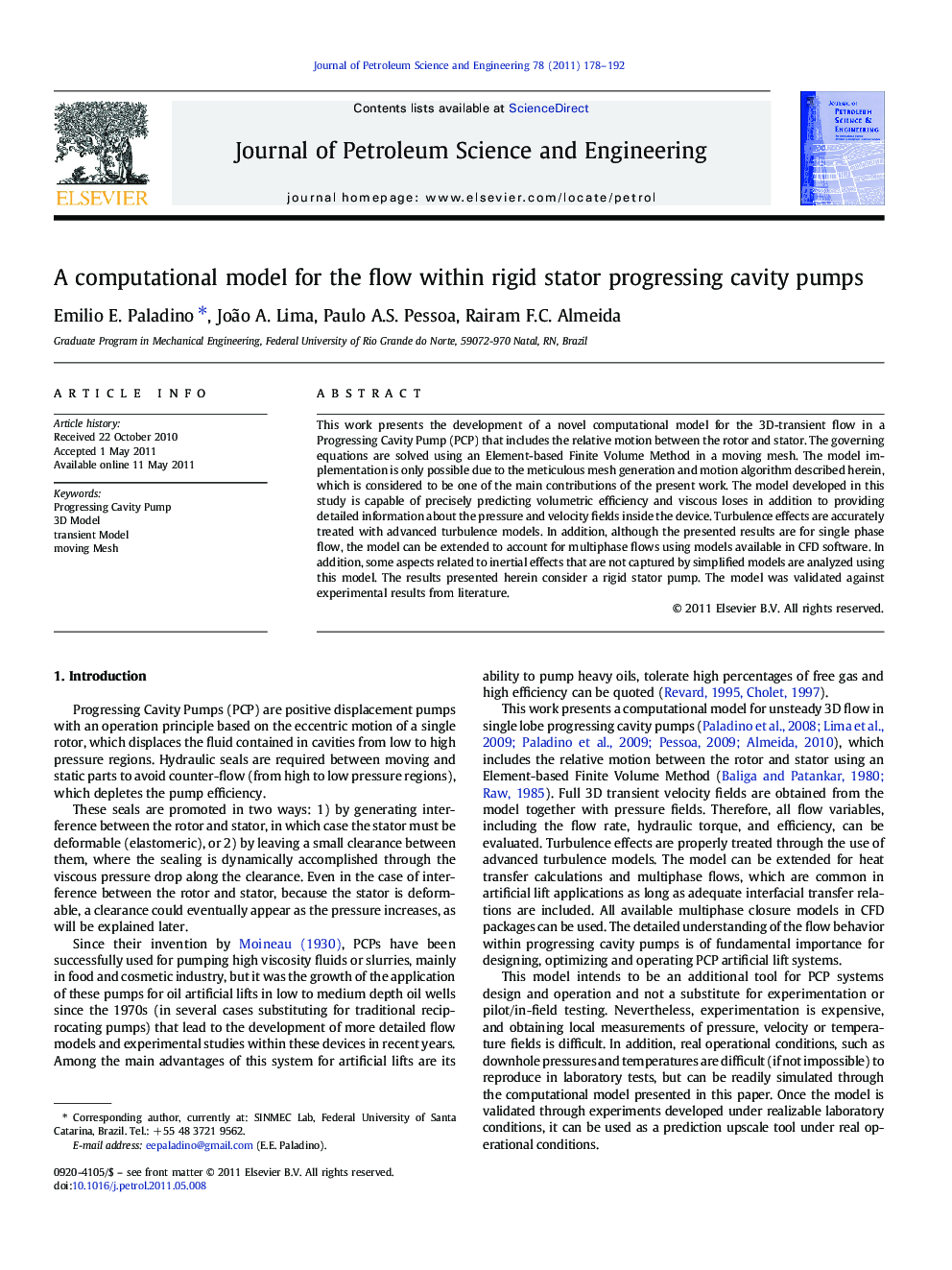| Article ID | Journal | Published Year | Pages | File Type |
|---|---|---|---|---|
| 1755707 | Journal of Petroleum Science and Engineering | 2011 | 15 Pages |
This work presents the development of a novel computational model for the 3D-transient flow in a Progressing Cavity Pump (PCP) that includes the relative motion between the rotor and stator. The governing equations are solved using an Element-based Finite Volume Method in a moving mesh. The model implementation is only possible due to the meticulous mesh generation and motion algorithm described herein, which is considered to be one of the main contributions of the present work. The model developed in this study is capable of precisely predicting volumetric efficiency and viscous loses in addition to providing detailed information about the pressure and velocity fields inside the device. Turbulence effects are accurately treated with advanced turbulence models. In addition, although the presented results are for single phase flow, the model can be extended to account for multiphase flows using models available in CFD software. In addition, some aspects related to inertial effects that are not captured by simplified models are analyzed using this model. The results presented herein consider a rigid stator pump. The model was validated against experimental results from literature.
Research highlights► Simplified models for PCP flows are not suitable for some flow conditions. ► Main shortcoming for CFD modeling in a PCP is the mesh generation and mesh motion. ► Meticulous mesh generation and mesh motion algorithm made possible the CFD modeling. ► CFD provides detailed information about flow variables. ► Advanced models for complex flows in PCPs can be used with this algorithm.
